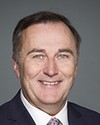Of the 239 veterans who completed suicide, as the words have to be said, how many of them would have taken the medication mefloquine? Can we find this type of information through ATIP or through a question during question period?
Evidence of meeting #47 for Veterans Affairs in the 42nd Parliament, 1st session. (The original version is on Parliament’s site, as are the minutes.) The winning word was information.
A recording is available from Parliament.



